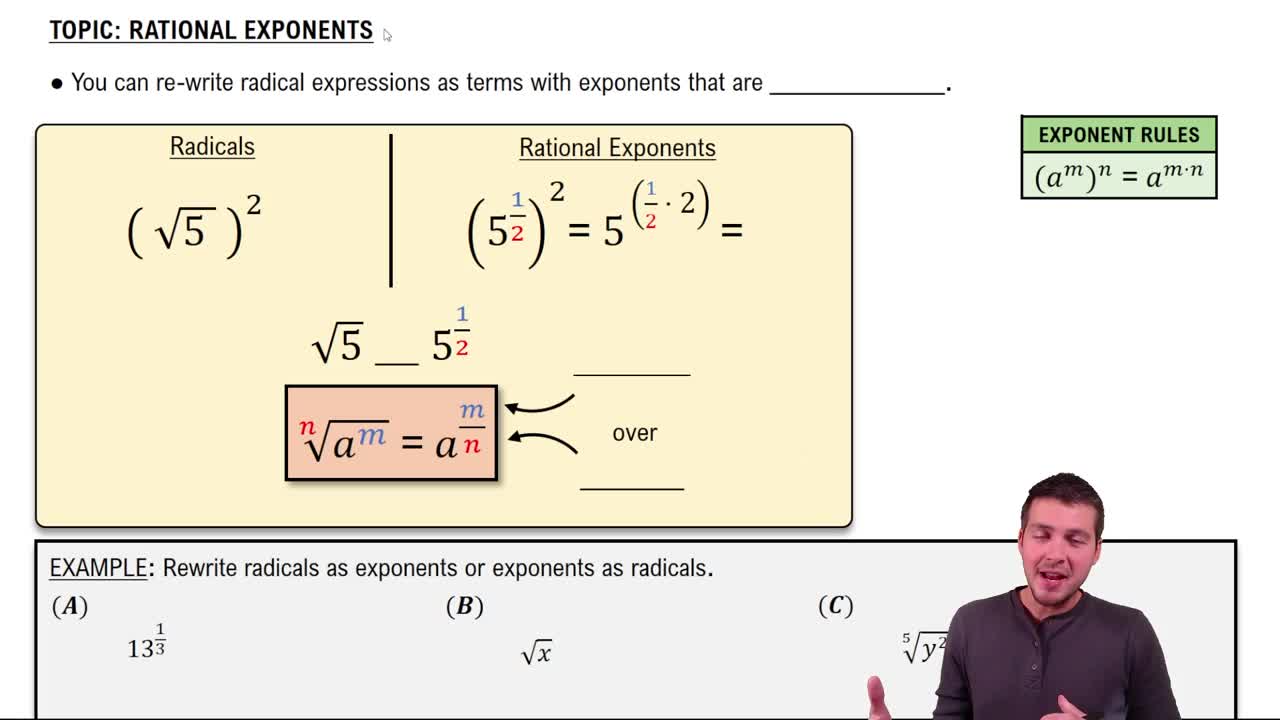Here are the essential concepts you must grasp in order to answer the question correctly.
Rationalizing the Numerator
Rationalizing the numerator involves rewriting an expression so that the numerator is free of radicals. This is often achieved by multiplying both the numerator and the denominator by a suitable expression that will eliminate the radical in the numerator. For example, if the numerator is a cube root, you may multiply by the same cube root raised to a power that will yield a rational number.
Recommended video:
Rationalizing Denominators
Simplifying Radicals
Simplifying radicals refers to the process of reducing a radical expression to its simplest form. This involves factoring out perfect squares, cubes, or higher powers from under the radical sign. For instance, the cube root of a product can be expressed as the product of the cube roots of the individual factors, which can help in simplifying the overall expression.
Recommended video:
Adding & Subtracting Unlike Radicals by Simplifying
Properties of Exponents and Radicals
Understanding the properties of exponents and radicals is crucial for manipulating expressions involving roots. Key properties include the product rule (√a * √b = √(ab)), the quotient rule (√a / √b = √(a/b)), and the power rule ((√a)^n = a^(n/2)). These properties allow for the simplification and rationalization of expressions involving roots, making it easier to work with them in algebraic contexts.
Recommended video:
 Verified step by step guidance
Verified step by step guidance Verified Solution
Verified Solution

